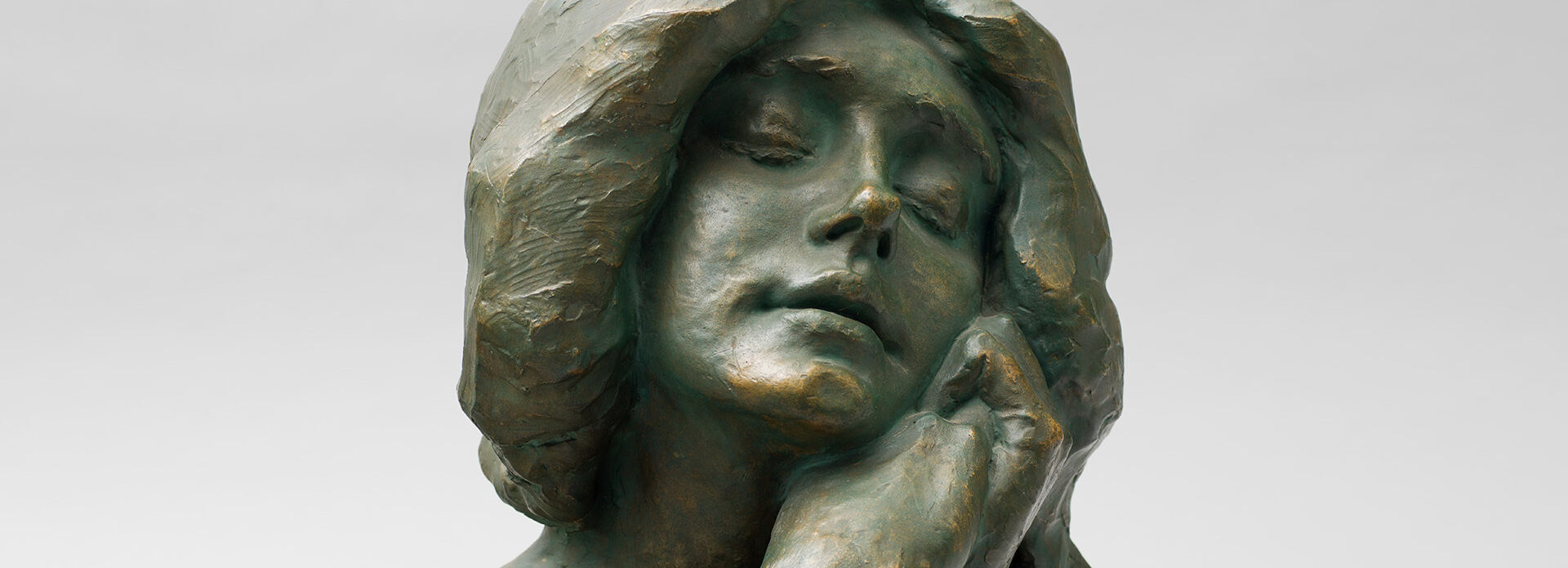In collaboration with The Royal Swedish Academy of Music, Nationalmuseum is organizing the interdisciplinary conference Sensuous Consonance: The visual arts in conjunction with music around 1900. The aim is to shed light on the multifaceted, international efforts to bring music and visual art together in the period around the turn of the 20th century.
When and where
Friday 4 October 2024
- 9:00–12:30, The Royal Swedish Academy of Music, Blasieholmstorg 8, Stockholm (pre-reigstration)
- 13:30–17:30, Nationalmuseum, Södra Blasieholmshamnen 2, Stockholm
Language
English
Cost
Free of charge
Pre-registrations
- No pre-registration if you are only attending the afternoon lectures at Nationalmuseum.
- Limited number of seats at The Royal Swedish Academy of Music, please register at linda.hinners@nationalmuseum.se no later than 20 September if you intend to participate in the entire day's programme.
In the decades around 1900 attempts were made to unify music and visual arts in new ways. Richness of colour, dynamism in time and/or space, and a fundamental (though rarely absolute) absence of words – these characteristics united the two art forms, even as they engaged different senses. An artwork that appealed to both the ear and the eye, in one way or another, and that wholly or partially avoided communicating through words, could be assumed to have particularly favourable conditions for imparting a sense of the intimate as well as the sublime, of hidden connections, and of transcendent meaning.

Alice Nordin, Kvinnobyst, variant på "Andante Patetico", 1911. Patinerad gips.
A Swedish example is the intimate artistic and personal interplay between Alice Nordin (sculptor, 1871–1948) and Hugo Alfvén (composer, violinist and painter, 1872–1960), where practices of beholding and listening, of sculpting and musical composition/performance were conjoined reciprocally in a context of romance and aesthetic experiment, visible in Nordin's bust named after the slow movement, “Andante patetico”, of Alfvén’s Sonata for violin and piano (1896). Another example of art and music in conjunction is Gottfrid Larsson’s sculpture Symphony (1906–09) in the old concert hall of The Royal Swedish Academy of Music.
Agenda
9:00–12:30
The Royal Swedish Academy of Music
Welcome from the organizers: Tobias Lund, Ph. D., Musicologist, Lund University and Linda Hinners, Ph. D. Curator, Nationalmuseum, Stockholm
Key Note
Axel Englund, Professor of Literature and Wallenberg Academy Fellow at the Department of Culture and Aesthetics, Stockholm University: The Musical Body Seen and Unseen
Pause
Session 1. Chair: Tobias Lund
Dagmar Thielen, Ph.D., Art Historian, Dept of Architecture, University of Leuven: ‘Nun, macht’s auch so!’ Chaos and Universality in the Definition and Appearances of Wagnerism (1882–1914)
Nuno Cernadas, Doctoral candidate, Ass. piano teacher, Royal Conservatory Brussels: Let there be Light! The Creation of an Informed Colored-Light Performance of Alexander Scriabin's Late Piano Sonatas
Music performed by pianist Matilda Lindholm
Emilia De Geer, Doctoral candidate at the Royal College of Music in London: ’Almost as much as music’: Understanding the Musical Imagery in Claude Debussy’s Estampes
Music performed by pianist Matilda Lindholm and violinist Tobias Ringborg
Lunch
13:30–17:30
Nationalmuseum
Session 2. Chair: Linda Hinners
Ophélie Ferlier-Bouat, Director, Musée Bourdelle, Paris: ‘Music and Sculpture are the Same’: Antoine Bourdelle‘s Relationship with Music
Tobias Kämpf, Ph. D., BA, Art Historian, University of Erlangen: Beyond Matter: Visual Avantgardes and the Agency of Music in the Long Nineteenth Century
Anne Leonard, Ph. D., Manton Curator of Prints, Drawings, and Photographs, Clark Art Institute, Williamstown, MA: Symbolist Art and the Path toward Silence
Music performed by flautist Sara Hammarström
Pause
Session 3. Chair: Karin Sidén, Associate Professor, Director, Prins Eugen’s Waldemarsudde
Polina Dimova, Associate Professor of Russian, University of Denver: The Color of Music: On Synaesthesia and the Origins of Abstract Art
Katarina Wadstein MacLeod, Professor, Dept. of Art History, Stockholm university: Revenge at the Royal Opera House: The Intermedial Collaboration between Artist Anna Boberg and Composer Wilhelm Stenhammar
Jonas Lundblad, Associate Professor, Åbo Academy University: The Colours of Nordic Madness in Paris: Viking Dahl’s Experimental Score for the 1920 Ballet Maison de Fous
Concluding remarks
David Howes, Professor of Sociology and Anthropology / Co-Director, Centre for Sensory Studies, Concordia University, Montreal, and Fellow of the Royal Society of Canada
Organizers
Linda Hinners, curator at the Nationalmuseum in Stockholm, linda.hinners@nationalmuseum.se
Tobias Lund, musicologist at Lund University tobias.lund@odeum.lu.se, tobias.lund@odeum.lu.se
